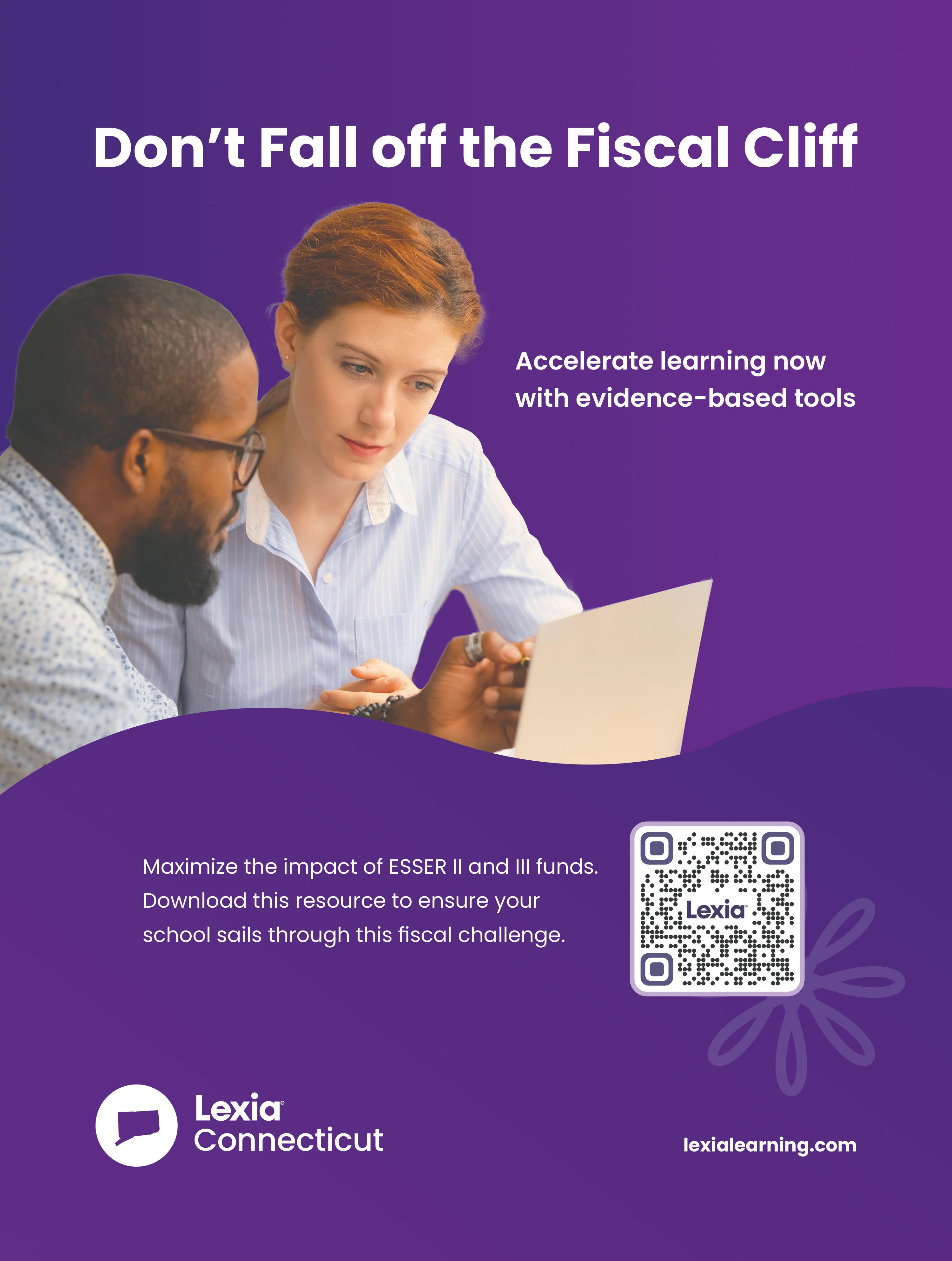
2 minute read
CABE DIVERSITY, EQUITY AND INCLUSION COMMITTEE MEETS
LAW AMENDED
(continued from page 1) teacher to student’s in-person in the classroom and students engaged in remote learning.”
Advertisement
That prohibition gained new contours when the Connecticut State Department of Education issued guidance on September 27, 2022 regarding several aspects of remote learning, including the interpretation of the prohibition against dual instruction. The guidance stated that when two schools enter into an agreement to share a course, that is to be considered course sharing and not remote learning, and therefore it would be outside the prohibition against dual instruction. In the guidance, the distinction was made that in course sharing all students would be in classrooms somewhere (e.g., at a second school) supervised by school staff, as opposed to a teacher teaching to students in the room, and to students remotely and not necessarily supervised by school staff (e.g., at home). The guidance noted that course sharing could be done between two schools in the same district (intradistrict) or in two different districts (interdistrict).
The guidance also stated that the prohibition against dual instruction would be superseded by federal disability laws (IDEA and Section 504 of the Rehabilitation Act of 1973) for students who required remote instruction under such laws.

The September 2022 guidance was not met favorably by the Connecticut Education Association and the American Federation of Teachers, who argued that it was a back door to dual instruction and was contrary to the Public Acts relevant to remote learning, and wanted the guidance rescinded.
Fast forward to this year, and the legislature has enshrined two allowances for dual instruction into law (in Section 12 of Public Act 23-150 which amends Section 10-4w of the General Statutes), but with requirements and language that are a bit different from the guidance. So education leaders who read the CSDE’s September 2022 guidance will need to review the Act’s language to learn the details of the allowances.
As examples, Public Act 23-150 has requirements for the interdistrict or intradistrict cooperative learning programs. Under the Act, the programs are described as having the students “present on school grounds during the regular school day” and a certified educator must be present in the classroom providing the instruction and in each of the classrooms receiving the instruction. And when such cooperative learning programs are utilized they must be implemented in accordance with an agreement between the board of education and the representatives of the bargaining units participating in the programs. The Act also adds language that individualized education programs or Section 504 plans for students would be exceptions to the prohibition against dual instruction.
While Public Act 23-150 amended aspects of dual instruction, other language regarding remote learning in Section 10-4w of the General Statutes was unchanged. For any remote learning program, the program must be aligned with published CSDE remote learning standards and districts must adopt a policy regarding remote learning attendance (this policy has specific requirements as well, outlined in Section 10-4w). And while a remote learning program is currently allowed in grades 9-12, the allowed expansion to grades K-12 begins in the 2024-25 school year.








